Eliminate Static and Lint from your life, and your wardrobe, with these simple and effective DIY tricks! Are you tired of clothes clinging uncomfortably, or finding your favorite black pants covered in unsightly lint? I know I am! It’s a common frustration, and thankfully, one that’s easily solved with a little know-how and some household items.
The struggle with static and lint isn’t new. In fact, our ancestors dealt with similar issues, albeit with different materials. Think about the wool garments of centuries past – static cling was likely a constant companion! While we’ve come a long way in fabric technology, the problem persists, especially with synthetic materials. But don’t despair!
Why do you need these DIY tricks? Because nobody wants to walk around feeling like they’re attracting every piece of dust and hair in the room! More importantly, constantly battling static and lint can damage your clothes over time. These simple solutions will not only save you money on expensive commercial products, but they’ll also help extend the life of your wardrobe. So, let’s dive into some easy and effective ways to eliminate static and lint and keep your clothes looking their best!
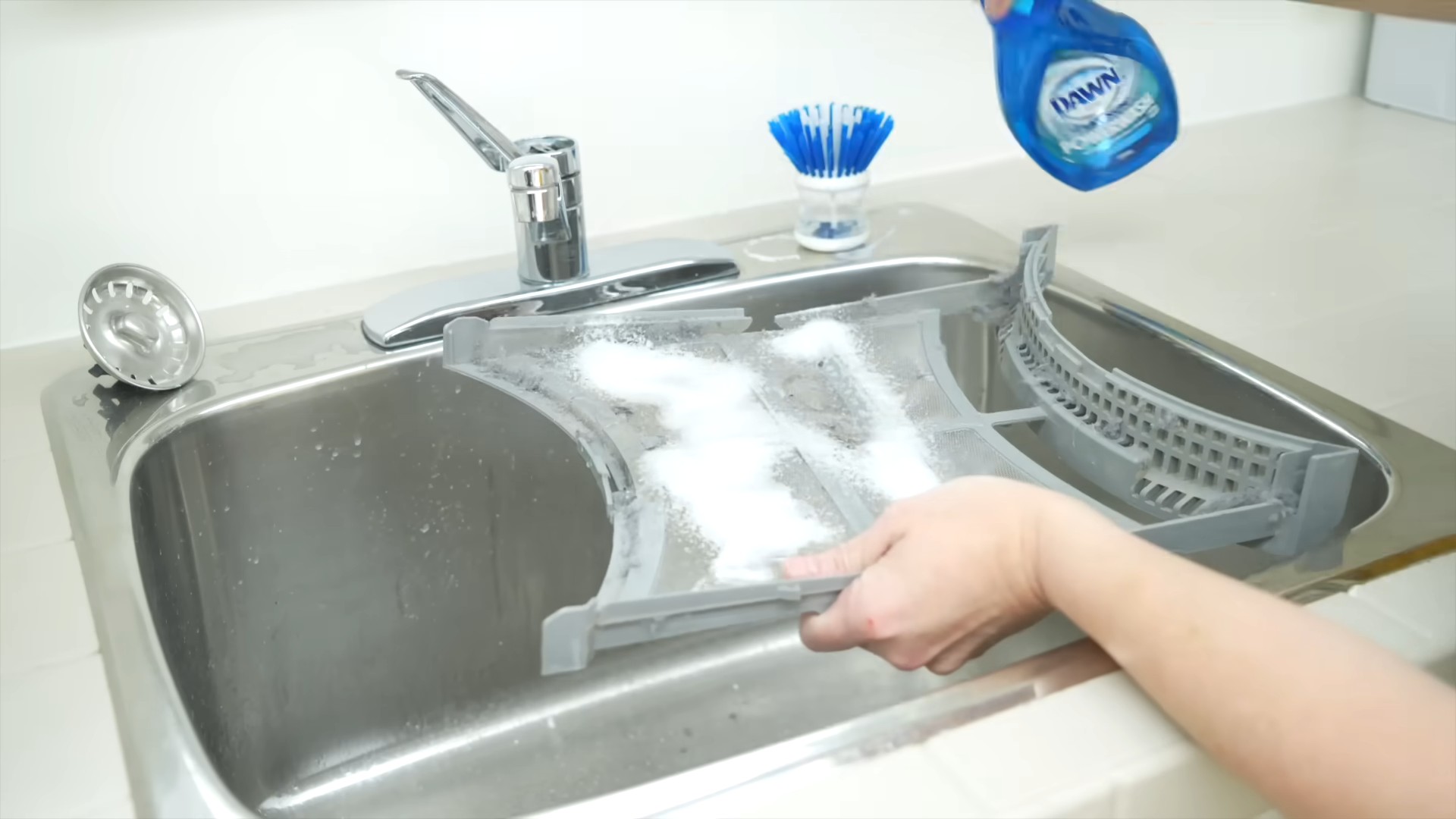
DIY Static and Lint Eliminator: A Guide to Clutter-Free Clothes
Hey there, fellow DIY enthusiasts! Are you tired of battling static cling and lint clinging to your favorite clothes? I know I was! It’s frustrating to put on a perfectly clean outfit only to find it immediately covered in fuzz or sticking uncomfortably to your skin. Luckily, I’ve discovered some fantastic DIY solutions that are not only effective but also budget-friendly and eco-conscious. Let’s dive in and banish static and lint from our wardrobes for good!
Understanding the Enemy: Static and Lint
Before we jump into the solutions, let’s quickly understand what we’re fighting. Static cling is caused by an imbalance of electrical charges on the surface of materials, often created by friction. Dry air exacerbates the problem, making it more common in winter. Lint, on the other hand, is simply loose fibers that detach from fabrics and cling to clothing due to static electricity or the texture of the fabric itself.
DIY Solutions: Your Arsenal Against Static and Lint
Here’s a breakdown of the DIY methods we’ll be exploring:
* Dryer Balls: Reusable and effective at reducing static and softening clothes.
* Vinegar Rinse: A natural fabric softener that neutralizes static.
* Baking Soda Boost: Helps to balance pH levels and reduce static in the wash.
* Safety Pin Trick: A simple and surprising way to discharge static.
* Lotion Application: Hydrates the skin and reduces static cling.
* Hairspray Shield: Creates a barrier against static on clothing.
* Fabric Softener Sheets Alternatives: DIY versions that are gentler on your clothes and the environment.
* Lint Roller Upgrade: Enhance your lint roller’s effectiveness.
Making Your Own Dryer Balls
Dryer balls are a fantastic alternative to dryer sheets. They bounce around in the dryer, separating clothes, reducing drying time, and minimizing static. You can buy them, but making your own is super easy and cost-effective!
Materials You’ll Need:
* 100% Wool Yarn (not superwash) – I prefer using natural, undyed wool.
* Pantyhose or an old sock
* Scissors
* Optional: Essential oils (like lavender or lemon)
Step-by-Step Instructions:
1. Start Wrapping: Begin wrapping the wool yarn tightly around your fingers to create a small ball.
2. Continue Wrapping: Keep wrapping, rotating the ball as you go, to maintain a round shape. The tighter you wrap, the denser and more effective the dryer ball will be.
3. Reach Desired Size: Continue wrapping until the ball is about the size of a tennis ball or slightly larger.
4. Secure the End: Tuck the end of the yarn tightly under a few layers of the wrapped yarn to secure it. You can also use a needle and thread to sew it in place for extra security.
5. Encase in Pantyhose: Place the wool ball inside a section of pantyhose or an old sock. Tie a knot tightly above the ball to secure it.
6. Repeat: Repeat steps 1-5 to create at least 3-6 dryer balls. The more you use, the better the results.
7. Wash and Dry: Place the pantyhose-encased balls in the washing machine and wash them on a hot cycle. This felts the wool and makes it more durable.
8. Dry Thoroughly: Transfer the balls to the dryer and dry them on high heat until they are completely dry. This further felts the wool.
9. Remove Pantyhose: Carefully cut the pantyhose or sock and remove the felted wool balls.
10. Add Essential Oils (Optional): If you want to add a scent, place a few drops of your favorite essential oil onto each dryer ball. Let them dry completely before using.
Vinegar Rinse: The Natural Fabric Softener
Vinegar is a powerhouse when it comes to laundry. It acts as a natural fabric softener, helps to remove odors, and reduces static cling. Don’t worry, the vinegar smell disappears during the drying process!
How to Use:
1. Add to Rinse Cycle: Pour 1/2 cup of white distilled vinegar into the fabric softener dispenser of your washing machine.
2. Run Wash Cycle: Run your washing machine as usual. The vinegar will be added during the rinse cycle.
3. Dry as Usual: Dry your clothes in the dryer or hang them to dry.
Baking Soda Boost: Balancing pH for Less Static
Baking soda helps to balance the pH levels in your washing machine, which can reduce static cling and leave your clothes feeling fresher.
How to Use:
1. Add to Wash: Add 1/2 cup of baking soda to your washing machine along with your regular detergent.
2. Run Wash Cycle: Run your washing machine as usual.
The Safety Pin Trick: A Quick Static Fix
This is a surprisingly effective trick for discharging static electricity.
How to Use:
1. Attach Safety Pin: Attach a safety pin to the inside seam of your garment, preferably in an inconspicuous area like the hem or a pocket lining.
2. Wear as Usual: Wear your garment as usual. The metal in the safety pin helps to ground the static electricity.
Lotion Application: Hydrating Your Skin
Dry skin is more prone to static cling. Applying lotion can help to hydrate your skin and reduce static.
How to Use:
1. Apply Lotion: Apply a generous amount of lotion to your skin, especially on areas that are prone to static cling, like your legs and arms.
2. Let Absorb: Allow the lotion to absorb into your skin before getting dressed.
Hairspray Shield: Creating a Static Barrier
Hairspray can create a temporary barrier against static cling.
How to Use:
1. Hold Hairspray Away: Hold the can of hairspray about 12 inches away from your garment.
2. Lightly Spray: Lightly spray the inside of your garment, focusing on areas that are prone to static cling.
3. Let Dry: Allow the hairspray to dry completely before wearing the garment. Be careful not to use too much, as it can make your clothes stiff.
DIY Fabric Softener Sheets Alternatives
Commercial fabric softener sheets often contain harsh chemicals that can irritate the skin and harm the environment. Here are some DIY alternatives:
Scented Cloths:
1. Gather Materials: You’ll need small cloths (old washcloths or cut-up t-shirts work well), white vinegar, water, and essential oils.
2. Make Solution: In a container, mix equal parts white vinegar and water. Add 10-15 drops of your favorite essential oil (lavender, lemon, or tea tree are great choices).
3. Soak Cloths: Soak the cloths in the solution until they are saturated.
4. Wring Out Excess: Wring out the excess liquid from the cloths.
5. Store: Store the cloths in an airtight container.
6. Use: Place one cloth in the dryer with your clothes.
Wool Socks:
1. Gather Materials: You’ll need a clean wool sock and a few drops of essential oil.
2. Add Essential Oil: Place a few drops of your favorite essential oil onto the wool sock.
3. Dry: Place the sock in the dryer with your clothes.
Lint Roller Upgrade: Making it More Effective
Sometimes, even with all these preventative measures, lint still finds its way onto our clothes. Here’s how to make your lint roller even more effective:
Add a Damp Cloth:
1. Dampen Cloth: Lightly dampen a clean microfiber cloth.
2. Wrap Around Roller: Wrap the damp cloth around the lint roller.
3. Roll Away Lint: Roll the lint roller over your clothes as usual. The damp cloth will help to pick up even more lint.
Use Packing Tape:
1. Wrap Tape: Wrap a piece of packing tape around your hand, sticky side out.
2. Pat Clothes: Pat your clothes with the tape to remove lint. Packing tape is often stickier than the adhesive on lint rollers.
Additional Tips and Tricks
* Separate Fabrics: Separate your laundry by fabric type. Certain fabrics, like synthetics, are more prone to static cling.
* Avoid Over-Drying: Over-drying clothes can increase static cling. Remove your clothes from the dryer while they are still slightly damp.
* Hang Dry: Hanging your clothes to dry is a great way to reduce static cling and save energy.
* Metal Hangers: Use metal hangers
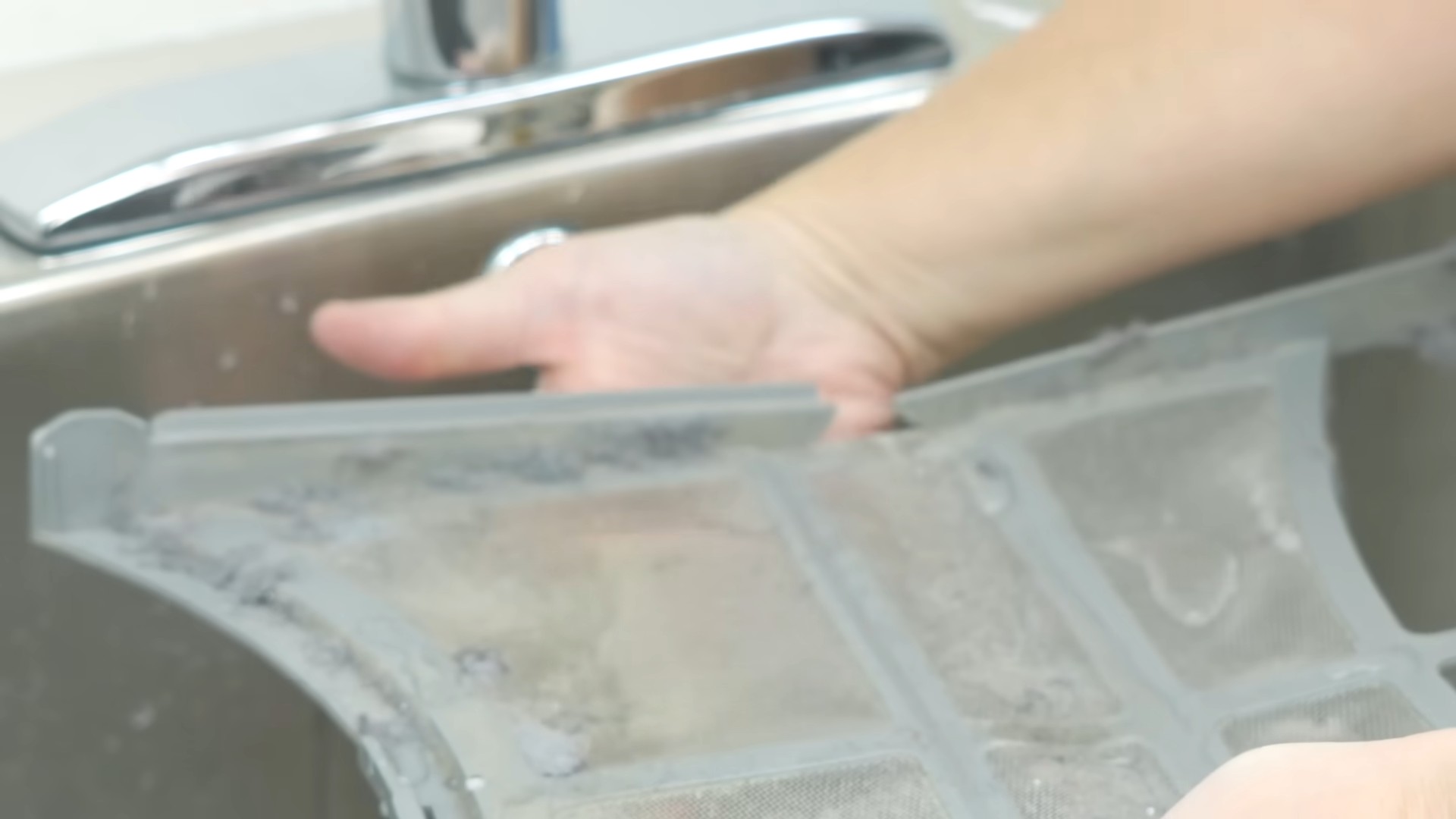
Conclusion
So, there you have it! A simple, effective, and budget-friendly way to eliminate static and lint from your clothes without relying on harsh chemicals or expensive dryer sheets. This DIY trick is more than just a quick fix; it’s a sustainable solution that benefits your wallet, your wardrobe, and the environment.
Why is this a must-try? Because static cling is annoying! It can ruin the drape of your favorite dress, make your socks stick together like glue, and leave you feeling generally uncomfortable. Lint, on the other hand, ages your clothes prematurely, making them look worn and faded. This simple DIY solution tackles both problems head-on, leaving your clothes looking and feeling their best.
But the benefits don’t stop there. Commercial dryer sheets often contain chemicals that can irritate sensitive skin and leave a residue on your clothes. This DIY alternative is gentle, natural, and safe for the whole family. Plus, it’s incredibly versatile.
Looking for variations? Consider adding a few drops of your favorite essential oil to the wool dryer balls for a subtle, natural fragrance. Lavender, lemon, or eucalyptus are all excellent choices. You can also experiment with different sizes of wool dryer balls to find what works best for your dryer load. For larger loads, use more balls; for smaller loads, use fewer. You can even try adding a few drops of white vinegar to the rinse cycle of your washing machine for an extra boost of static elimination.
This DIY trick is a game-changer for anyone looking to simplify their laundry routine and achieve better results. It’s easy to implement, cost-effective, and environmentally friendly. It’s a win-win-win!
We’re confident that once you try this method, you’ll never go back to store-bought dryer sheets again. The difference in your clothes will be noticeable, and you’ll feel good knowing that you’re making a conscious choice to reduce your environmental impact.
So, what are you waiting for? Gather your supplies, give this DIY trick a try, and experience the joy of static-free, lint-free clothes. We encourage you to share your experience with us in the comments below. Let us know what variations you tried, what essential oils you used, and how this DIY solution has transformed your laundry routine. Your feedback is invaluable and helps us continue to provide you with the best possible tips and tricks. Let’s say goodbye to static and lint, and hello to fresh, clean, and comfortable clothes!
Frequently Asked Questions
What exactly causes static cling and lint buildup in the first place?
Static cling is caused by an imbalance of electrical charges on the surface of your clothes. During the drying process, fabrics rub against each other, creating friction. This friction can transfer electrons from one fabric to another, resulting in one fabric becoming positively charged and the other negatively charged. These opposite charges attract, causing the fabrics to cling together. Synthetic fabrics like polyester and nylon are more prone to static cling because they don’t conduct electricity well, allowing the charges to build up.
Lint, on the other hand, is composed of tiny fibers that break off from your clothes during washing and drying. These fibers can accumulate in your dryer’s lint trap and on your clothes, making them look dull and worn.
How do wool dryer balls help eliminate static and lint?
Wool dryer balls work in several ways to reduce static and lint. First, they help to separate clothes in the dryer, allowing hot air to circulate more freely. This reduces drying time and minimizes friction, which in turn reduces static cling. Second, wool is a natural fiber that absorbs moisture. As the dryer balls tumble around with your clothes, they absorb excess moisture, which helps to prevent the buildup of static electricity. Finally, the textured surface of the wool dryer balls helps to gently loosen lint from your clothes, which is then collected in the dryer’s lint trap.
Are wool dryer balls safe for all types of fabrics?
Yes, wool dryer balls are generally safe for all types of fabrics. However, it’s always a good idea to test them on a small, inconspicuous area of delicate fabrics like silk or lace before using them on an entire garment. While wool is gentle, excessive tumbling can still potentially damage very delicate materials.
How long do wool dryer balls last?
Wool dryer balls are incredibly durable and can last for hundreds of loads. With proper care, they can last for several years. To prolong their lifespan, avoid using them with fabric softeners or dryer sheets, as these can coat the wool fibers and reduce their effectiveness. You can also occasionally “recharge” your wool dryer balls by washing them in hot water and drying them on high heat. This helps to fluff up the fibers and restore their absorbency.
Can I use essential oils with my wool dryer balls?
Yes, you can definitely use essential oils with your wool dryer balls! This is a great way to add a natural fragrance to your clothes. Simply add a few drops of your favorite essential oil to each dryer ball before tossing them into the dryer. Lavender, lemon, eucalyptus, and tea tree oil are all popular choices. However, be sure to use pure essential oils and avoid synthetic fragrances, as these can damage the wool fibers. Also, be mindful of any allergies or sensitivities that you or your family members may have before using essential oils.
What if I don’t have wool dryer balls? Are there any other alternatives?
While wool dryer balls are the most effective and sustainable option, there are a few other alternatives you can try. One option is to use aluminum foil balls. Simply crumple a few sheets of aluminum foil into balls and toss them into the dryer with your clothes. The aluminum helps to dissipate static electricity. However, aluminum foil balls are not as effective as wool dryer balls at reducing lint. Another option is to hang your clothes to dry. This is the most environmentally friendly option and completely eliminates the risk of static cling and lint buildup.
How do I clean my wool dryer balls?
Over time, your wool dryer balls may accumulate lint and debris. To clean them, simply wash them in hot water with a mild detergent. You can then dry them on high heat or air dry them. Avoid using fabric softeners or dryer sheets when washing your wool dryer balls, as these can coat the fibers and reduce their effectiveness.
My clothes still have static cling after using wool dryer balls. What am I doing wrong?
If you’re still experiencing static cling after using wool dryer balls, there are a few things you can try. First, make sure you’re using enough dryer balls. For larger loads, you may need to use more than three dryer balls. Second, try reducing the drying time. Over-drying your clothes can actually increase static cling. Finally, make sure your dryer is properly grounded. A faulty ground can contribute to static electricity buildup.
Is this DIY trick really more effective than store-bought dryer sheets?
In many ways, yes! While store-bought dryer sheets may seem convenient, they often contain harsh chemicals that can irritate sensitive skin and leave a residue on your clothes. This DIY trick, using wool dryer balls, is a natural, gentle, and effective alternative that eliminates static and lint without the use of harmful chemicals. Plus, it’s a more sustainable and cost-effective option in the long run.
Where can I buy wool dryer balls?
Wool dryer balls are widely available online and in many stores that sell laundry supplies. You can find them at major retailers like Amazon, Target, and Walmart, as well as at smaller, independent stores. Look for dryer balls made from 100% natural wool for the best results.

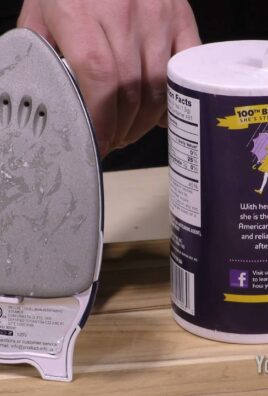
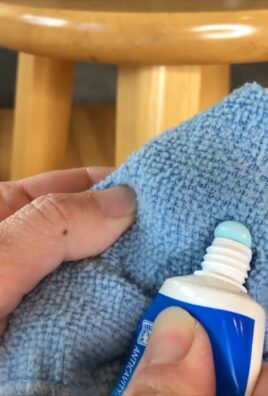
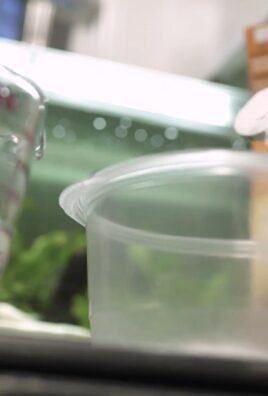
Leave a Comment